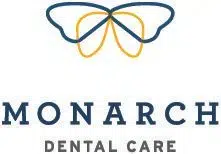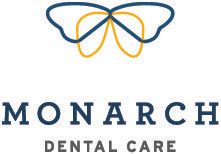
Did you know that nearly 90% of adults have had at least one cavity? This startling statistic highlights the ongoing challenges in maintaining oral health. Dental sealants, once primarily used for children, are now gaining attention from adults as well. To stop tooth decay, these thin, protective coatings are placed on the molar-biting surfaces.
This blog will delve into how effective dental sealants are for adults, explore their benefits, examine recent research, and consider factors affecting their effectiveness. It will provide a comprehensive look at whether these sealants are a worthwhile option for adult dental care.
What Are Dental Sealants?
Dental sealants are slender, shielding coverings that are placed on molar chewing surfaces. Because they fill up the pits and grooves where food particles and bacteria frequently gather, they are intended to stop tooth decay. Sealants are made from resin-based materials, which are durable and effective in protecting teeth.
The application process is straightforward. The tooth surface is first cleaned and dried by the dentist. Then, an acidic solution is applied to help the sealant adhere better. After rinsing and drying, the sealant is painted onto the tooth and cured with a special light, making it hard and durable.
This process creates a barrier that protects the tooth from decay-causing bacteria and acids. In places like the deep grooves of molars that are challenging to keep clean with normal brushing, sealants are especially helpful in avoiding cavities.
Benefits of Dental Sealants for Adults
Prevention of Cavities
Dental sealants are a really good way to keep cavities away. The chewing surfaces of molars, which are especially vulnerable to decay, are coated with these thin layers of protection. It is challenging to completely clean the deep pits and grooves of molars using a toothbrush. Tooth decay can result from the accumulation of food particles and germs in these regions.
By covering these grooves with a sealant, you create a barrier that prevents bacteria and acids from reaching the tooth enamel. This protective layer helps reduce the risk of cavities and can significantly contribute to long-term oral health.
According to studies, sealants can lower the incidence of degradation in the regions they are applied to by up to 80%.
Protecting Molars
Molars are crucial for effective chewing and digestion, making their health a priority. These back teeth have complex surfaces with deep fissures that are challenging to clean. Sealants play a vital role in protecting these surfaces.
By filling in the grooves and creating a smooth barrier, sealants prevent food particles and plaque from settling in these hard-to-reach areas. This protection is especially important as the risk of cavities in molars can lead to more serious dental problems if left untreated.
Sealants help maintain the integrity of these essential teeth, reducing the need for more invasive treatments in the future and supporting overall oral function.
Cost-Effectiveness
Sealants are a more affordable dental treatment option when weighed against the costs of treating cavities and other dental problems. The initial cost of applying sealants is relatively low compared to the cost of restorative treatments like fillings, crowns, or root canals that might be required if decay progresses.
With the right maintenance, sealants can endure for several years and offer long-term cavity protection. Investing in sealants can prevent the need for more expensive dental procedures down the road.
For adults, especially those with a history of dental issues or those at higher risk for cavities, sealants offer a cost-effective preventive measure that can save money and reduce the overall burden of dental care.
Effectiveness in Adults
Research and Studies: Recent studies have shown that dental sealants can be effective for adults as well as children. Research indicates that sealants can significantly reduce the risk of cavities, even in adult teeth. Studies demonstrate that adults with sealants experience fewer dental issues compared to those without.
Success Rates: The success rates of dental sealants in adults are promising. Evidence suggests that sealants remain effective in preventing decay for several years, offering protection against cavities and reducing the need for restorative treatments.
Comparison with Children: While sealants are highly effective for children, their effectiveness in adults is also notable. However, adults may have more complex dental issues that can influence the overall effectiveness of sealants compared to children, who often have fewer existing dental problems.
Considerations for Adults
Dental Health Status: The effectiveness of sealants can be influenced by an adult’s existing dental health. Individuals with significant dental issues may not benefit as much from sealants, making it essential to assess overall dental health before application.
Lifestyle Factors: Habits such as diet and oral hygiene play a role in how well sealants work. A diet high in sugars or irregular brushing and flossing can impact the effectiveness of sealants, so maintaining good oral hygiene is crucial.
Longevity: Sealants typically last several years but may need to be replaced over time. Regular dental check-ups can help ensure that sealants remain intact and continue to protect the teeth effectively.
Dental sealants can be a valuable tool for adults seeking to prevent cavities and protect their molars. They offer significant benefits, including cavity prevention and cost savings, and recent research supports their effectiveness.
However, the effectiveness of sealants can be influenced by factors such as existing dental health and lifestyle habits. Adults should consult with their Prairie Village dentist to determine if dental sealants are a suitable option for their specific needs and to ensure optimal oral health.

